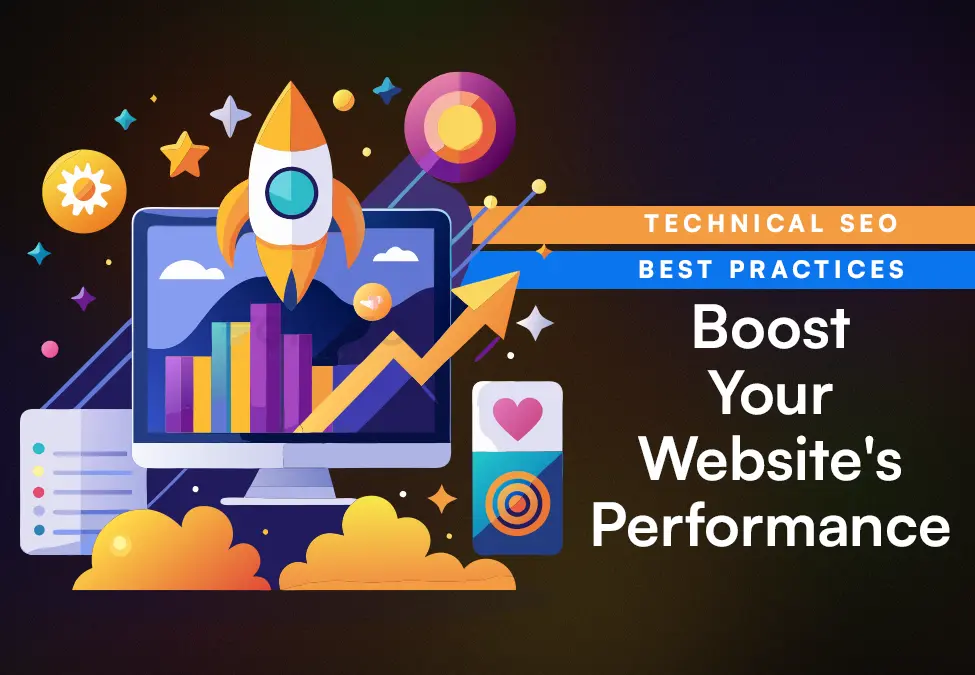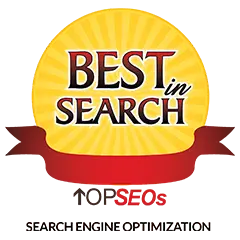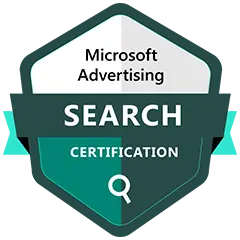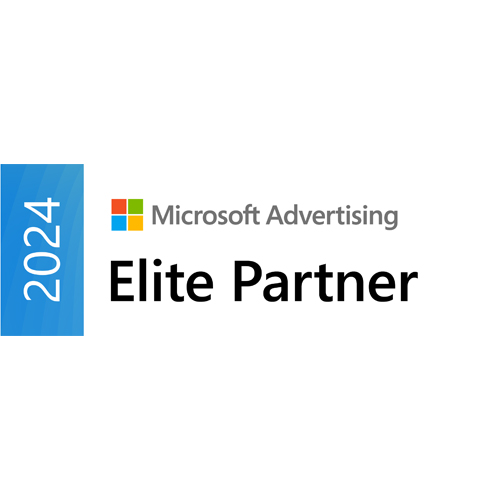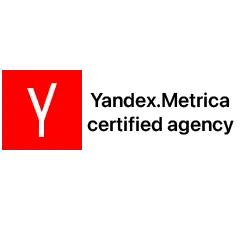Suppose you have written amazing, SEO-friendly, engaging content, but your CTR is still low. What could be the reason? The reason can be slow page load, broken links, mobile usability problems, or improper metadata. These factors are all optimized in technical SEO to improve the site’s performance.
Search engines can’t find your site and index its pages without technical SEO, which is the most important process for improving the website’s and its content’s performance. Many businesses only focus on on-page SEO and cannot achieve even optimal search rankings.
For ranking, you must focus on technical SEO, along with the other two on-page and off-page SEO. All three are crucial for effective results. You can manage without the other two, but your business will become invisible online without technical SEO.
Follow the best technical SEO practices researched by our experts and curated by our team in this blog. With these practices, you can improve your website’s performance and ensure desirable ranking in search results.
What Is Technical SEO?
As the name implies, technical SEO is all about the website’s technical health. It helps improve the website so search engines or Google crawlers can find and index it easily, helping users find your website quickly.
Overall, website architecture must be focused on enhancing performance and user experience because search engines cannot find your content without it.
Do you want your content to go unnoticed? No, right.
How Does Technical SEO Help Boost Your Website’s Performance?
Think of technical SEO as an engine that keeps your website running smoothly. Poor search engine optimization ruins the website’s performance, affecting user experience. Since people stay on a page for only 10 to 20 seconds, you should try to hold their attention for longer. Offer them a smooth experience when they are on your page. Technical SEO helps to grab website visitor’s attention.
Let’s learn more about the benefits of technical SEO, which are detailed below.
- Improve Page Load:
A 32% increase in bounce rate probability occurs when page load time extends from 1 second to 3 seconds (thinkwithgoogle). In technical SEO, you check the page load speed and technicality behind it, enabling the website page to load within 2 seconds. It helps boost visitors’ experience of the site.
- Ensures Proper Indexing:
Indexing seems like an easy process, but it’s not. Often, a technical SEO has to go through all the pages and check whether they are properly indexed. Accurate indexing ensures search engines can crawl and index your site’s pages. If pages are not indexed, they limit your visibility in the search results.
- Optimizes Website Structure:
Technical SEO corrects your website’s structure, helping users navigate smoothly and search engines crawl all the pages. There are over 1 billion websites on the Internet, and crawlers might take a long time to find yours. However, keeping your website structure synchronized and sleek helps crawlers find your site easily.
- Secure Your Site:
In technical SEO, the security level of the website is also checked. It ensures your site has an SSL certificate, which encrypts data transferred between users and servers. Moreover, search engines prioritize secure sites, improving ranking in the SERPs. Google considers HTTPS a ranking signal.
- Enhances Mobile Usability:
Around 55% of internet users shop via mobile phones. If your site does not work seamlessly on mobile devices, it can affect user experience and CTR, crucial signals for search engines to rank a website. Google prioritizes mobile-friendly sites when ranking them.
Top 10 Technical SEO Best Practices to Follow in 2024
Since 68% of online experiences start with a search engine, a high-performing site becomes vital for effective visibility for all businesses. Technical SEO improves the site’s overall look and feel, helping improve user experience. Well, most people know it.
But they don’t know what exactly they need to do to improve the site’s technical search engine optimization. We know what and how you should do it to boost your website’s performance.
Here are the top 10 Technical SEO practices to follow in 2024:
- Domain Format:
Your domain’s format and type can greatly impact SEO. When choosing a domain name, choose short, easy-to-remember, and easy-to-type names. This will ensure easy word-of-mouth marketing. Often, businesses choose complex domain names to be creative, making it difficult for people to pronounce the site’s name.
Best Practices to Follow:
- Use a domain name that reflects your brand voice and primary keyword.
- Use .com for your site if possible, as it is most common among the masses.
- Don’t use complex and lengthy domain names, as they confuse people.
For Example: We run a digital marketing agency, Egnoto. So, the domain name will be like the one in the below image.
</Note: Edit the below image to avoid copyright issues.
Use- https://www.egnoto.com>
- URL Structure:
Clean, accurate, and logical URLs help search engines quickly understand the page’s content without opening them. An impeccable hierarchy of URLs helps crawlers better index and rank pages. Additionally, users can interpret and navigate pages easily with proper URLs.
Best Practices to Follow:
- Use descriptive, keyword-rich URLs
- Keep URLs short
- Use hyphens instead of underscores to separate words.
For Example:
This URL is descriptive and keyword-rich. It reflects the page’s content. Likewise, hyphens are used to separate the words instead of underscores.
- Website Structure:
Site navigation should be smooth for crawlers and users, and website structure plays a crucial role in it. If the website structure is not proper, Googlebot will have a hard time finding and indexing pages. Which page do people move to after the home page? Try walking a mile in the user’s shoes when visiting a site.
Best Practices to Follow:
- Define your goal of creating a website
- Mention categories and subcategories clearly
- Use internal linking to guide users and search engines
- Create a logical flow from the homepage to deeper pages
For Example:
Suppose you run an e-commerce Website. Its structure should be:
Home> Categories> Subcategories> Product pages.
It will help Googlebot and users navigate the website easily.
- Optimize for BERT Algorithms:
The BERT algorithm helps better understand the context of words in users’ search queries. BERT is an acronym for Bidirectional Encoder Representations from Transformers. Bidirectional means encoding sentences back and forth, Encoder Representations means translating sentences into words, and Transformers encode every word in the sentence with its position.
Best Practices to Follow:
- Create high-quality content
- Write in a natural and conversational tone
- Optimize for featured snippets
For Example:
Focus on specific user queries and address pain points in your content instead of only writing keyword-focused content.
- 404 Pages:
404 errors occur when a user tries to search for a page that doesn’t exist. They hamper users’ experience and cause frustration when users encounter nothing on the page. A well-crafted page can reduce this frustration.
Best Practices to Follow:
- Create a custom and informative 404 page.
- Provide a search bar on the 404 page.
- The page should have a clear call to action.
For example:
Provide friendly messages like ” Oops! We can’t find that page.” “Oops! It looks like we have lost this page.” “This page doesn’t exist; try exploring our categories”.
- Broken Links:
Broken links are hyperlinks to pages that no longer exist. Around 38% of web pages that existed in 2013 are no longer available now (pewresearch). If your website pages or blogs have links to pages that don’t exist anymore, it can reduce the site’s credibility and impact SEO ranking. So, detect and fix broken links as soon as possible.
Best Practices to Follow:
- Use tools to check links regularly.
- Update and redirect broken links.
- Ensure links direct to existing pages
For example:
If any of your blog or web pages have links to broken links, either remove these links or redirect them.
- XML Site Map:
A site map helps search engines reach all the pages on your website in half the time. So, a site map is like a road map for navigating a website’s pages. Well, this is not a ranking disadvantage, but it is important to consider for technical SEO.
Best Practices to Follow:
- Create and submit a site map to the Google search console or other relevant search engines.
- Include pages that you want to be indexed.
- Don’t include duplicate pages.
For Example:
www.example.com/sitemap.xml
List all the URLs properly in your site map.
- SSL Certificate:
SSL stands for Security Socket Layer. It doesn’t affect SEO rankinig directly, but it is an important factor for “Trustworthiness” EEAT framework by Google. SSL indicates your site is verified.
Best Practices to Follow:
- Use HTTPS rather than HTTP
- Regularly check and renew your SSL certificate
- Ensure your website’s subdomains also use SSL
For Example:
Instead of http://www.example.com use https://www.example.com
- Mobile-friendly:
Mobile has become an important part of our everyday lives. Millions of people search queries using smartphones and access all the pages of sites via this tiney and portable device. In technical SEO mobile-frienndliness of your site is checked.
Best Practices to Follow:
- Use a responsive design that fits any screen size
- Optimize images and elements for faster loading on different devices
- Use Google’s mobile-friendly tool
For Example:
Optimize your site thoroughly for mobile-friendliness using various devices and tools.
- Multi-lingual SEO:
Implementing multilingual SEO ensures non-native speakers can also use your website without language barriers. It optimizes your website for different types of languages.
Best Practices to Follow:
- Identify your markets.
- Conduct keyword research for a target audience.
- Use hreflang tags for regional targeting.
- Create separate URLs for the languages you want to target.
For Example:
Hreflang langauge code for Spanish is ‘es’ and for German langauge ‘de’.
- Canonical URLs:
In technical SEO, duplicate pages are checked to improve the website’s health. To indicate which pages are original, canonical URLs are placed in duplicate pages. Googlebot gets confused when it sees many duplicate pages on a site; this confusion is resolved with canonical URLs.
Best Practices to Follow:
- Use the URL inspection tool.
- Ensure canonical pages point to the right URLs
- Avoid using canonical pages to mask poor content and manipulate ranking
For Example:
If you have many pages with the same content, use the canonical page to show the main page.
- Site Speed:
Site speed means how quickly your pages load. Slow sites can’t attract more visitors because of poor user experience. No one waits for a website to load for more than 3 seconds.
Best Practices to Follow:
- Assess how quickly the largest pages load
- Optimize images as they slow down pages
- Use tools to optimize the site’s speed and reasons
For Example:
Compress images to enable browser caching and use the best practices mentioned above to speed up the site.
- Structured Data:
Structured data, also called schema markup, helps to show a site’s content differently on SERPs. It is a small code placed on all the pages you want Googlebot to read and understand effectively. Overall, it helps to show your pages differently.
Best Practices to Follow:
- Target rich, unique results
- Find out a gap in your content
- List key entities crucial for your business
For Example:
Adding schema markup to the recipe site helps to show its pages in the featured snippet, along with their ranking and the time required to prepare the recipe.
- Core Web Vitals:
Core web vitals are metrics to check the real-world user experience with the website’s loading speed. Google suggests using core web vitals to achieve success with search.
Best Practices to Follow:
- Focus on the Largest Contentful Paint (LCP), Interaction To Next Paint (INP), Cumulative Laout Shift (CLS)
- Optimize server response time and minimize JavaScript execution to improve LCP
- Ensure stable page layouts to reduce CLS
For Example:
For LCP, images should be reduced in size, and server response time should be improved. Leaving space for ads and images can improve CLS.
Conclusion:
A strong online presence starts with a high-performing website. Technical SEO ensures a site performs impeccably in every situation. You have to focus on various things while ensuring technical SEO; we have covered almost all of them in this blog. Start focusing on technical SEO from the day your website architecture is decided to the day a user finds your web page or blog in SERPs.
This is not a one-time process; you must regularly check the site’s technical SEO. Many tools make the process easy and quick. Find the most suitable ones for your website. As we have said, technical SEO includes many elements, so if you don’t have time and resources, a team of experts can do it for you. Egnoto is an emerging digital marketing agency and has helped many businesses boost their site’s performance and rank their pages. You can contact us round the clock and connect with experienced and dedicated technical SEOs.
